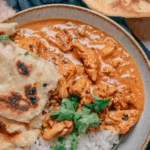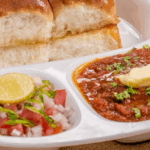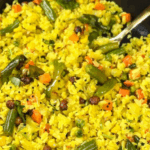
Home Cooking: The Complete Guide to Cooking at Home
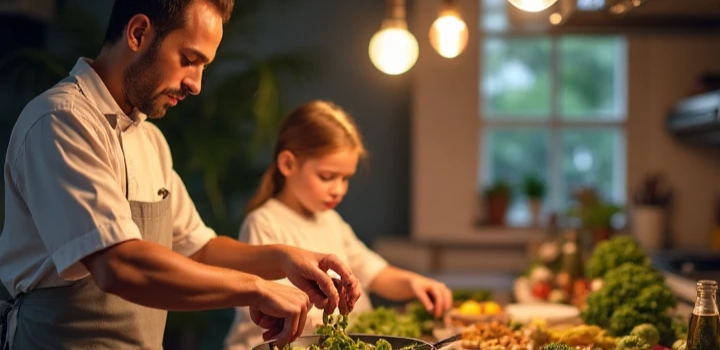
The Complete Guide to Cooking at Home
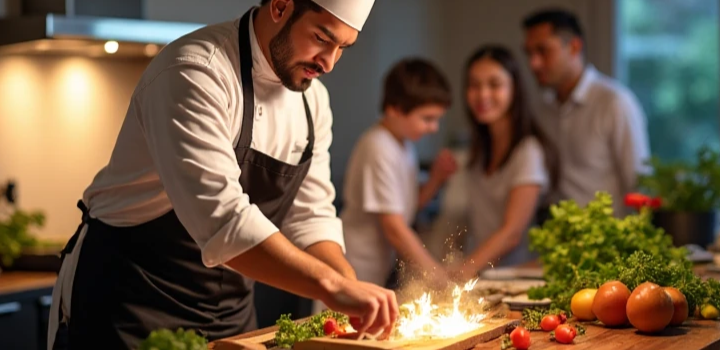
Home cooking isn’t just about food — it’s about creativity, care, and self-expression. As a chef, I truly believe that delicious meals aren’t reserved for restaurants. With the right approach, fresh ingredients, and a few core techniques, anyone can cook like a pro in their own kitchen. In this complete guide, I’ll walk you through everything you need to know to feel confident at the stove — from selecting ingredients to mastering cooking methods, seasoning, and plating. Welcome to the world of home cooking, where every dish is a pleasure and a product of your own hands.
- What Is Home Cooking?
- Benefits of Home Cooking
- Essential Tools for Home Cooking
- How to Start Cooking at Home
- Easy Home Cooking Recipes for Beginners
- Tips to Improve Your Home Cooking Skills
- Home Cooking on a Budget
- Healthy Home Cooking Tips
- Popular Styles of Home Cooking Around the World
- Home Cooking for Special Diets
- Creating the Perfect Home Kitchen Atmosphere
- Home Cooking as a Lifestyle
- Frequently Asked Questions on Home Cooking
What Is Home Cooking?
Home cooking is the art of preparing meals in your own kitchen using fresh, real ingredients — not pre-packaged shortcuts. It’s about taking control of what goes on your plate, choosing quality over convenience, and cooking with intention.
As a chef, I see home cooking as more than just a daily task — it’s a powerful skill that brings comfort, health, and creativity into everyday life. Whether you’re preparing a simple pasta dish or a full Sunday roast, the beauty of home cooking lies in the freedom to experiment, adjust flavors, and make food that truly reflects your taste and values.
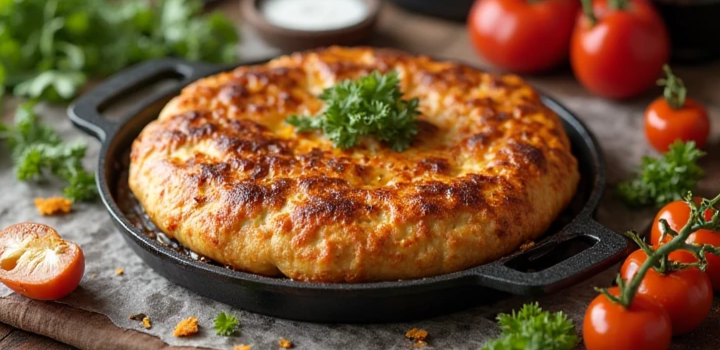
Definition and Meaning
Home cooking is the practice of preparing meals in your own kitchen, using raw or minimally processed ingredients. It’s not about perfection or complexity—it’s about making real food with care, in a space that’s personal and familiar.
As a chef, I define home cooking as the foundation of culinary skill. It’s where most of us first learn to crack an egg, simmer a sauce, or season to taste. Unlike professional kitchens, home cooking is flexible. You cook for people you care about, adapt to what you have in the fridge, and create dishes that suit your mood or memories.
In essence, home cooking is about nourishment, self-reliance, and expression. It’s less about recipes and more about instincts, experience, and tradition.
How Home Cooking Differs From Eating Out
The main difference between home cooking and eating out lies in control, personalization, and intent.
At home, you control everything: the ingredients, the portion size, the salt levels, and the cooking method. You can accommodate dietary needs, use higher-quality ingredients, and avoid preservatives or excess fats. When you cook at home, you know exactly what’s on your plate.
As a chef, I appreciate fine dining—but restaurant meals are often rich, salted to please most palates, and designed for quick production. In contrast, home cooking is slower, more thoughtful. It may not always be picture-perfect, but it’s deeply satisfying because it’s tailored to you and your family.
Home cooking also encourages learning. Each dish teaches you something: how heat transforms texture, how acidity balances flavor, or how a simple herb can elevate an entire meal.
Cultural Significance Around the World
Home cooking carries deep cultural meaning. It preserves traditions, tells family stories, and connects generations. Every culture has its own flavor, ingredients, and rituals around the home kitchen.
In Italy, home cooking is sacred—grandmothers pass down recipes for hand-rolled pasta and simmered sauces. In Japan, precision and seasonality guide homemade meals, from miso soup to bento boxes. In Mexico, home cooks make tortillas from scratch, celebrating corn as a cultural cornerstone.
Even in fast-paced urban centers, the act of cooking at home reflects identity and pride. As a chef, I draw constant inspiration from global home kitchens. They remind me that the heart of cuisine doesn’t come from fancy tools or ingredients—it comes from human hands, memory, and love.
Whether it’s a tagine in Morocco, a stew in Hungary, or rice and beans in Brazil, home cooking is a language spoken in every household—and it always says, “you are welcome here.”
Benefits of Home Cooking
Cooking at home isn’t just about saving money or avoiding takeout. It’s a lifestyle choice that empowers you to eat better, live healthier, and connect more deeply with the food on your plate. As a professional chef, I can confidently say that some of the most rewarding meals I’ve ever had weren’t in fine dining rooms—they were home-cooked, simple, and made with intention.
Health Benefits
One of the greatest advantages of home cooking is its direct impact on your health. When you prepare meals yourself, you naturally reduce your intake of processed foods, excess sodium, unhealthy fats, and added sugars. You have the freedom to use fresh, whole ingredients—vegetables, lean proteins, whole grains—and control cooking methods to suit your needs.
As a chef, I often say: food is fuel, but it’s also medicine. Home cooking allows you to tailor meals for specific goals—whether you’re lowering cholesterol, managing diabetes, or simply trying to feel more energized. You’re not just feeding your hunger; you’re nourishing your body.
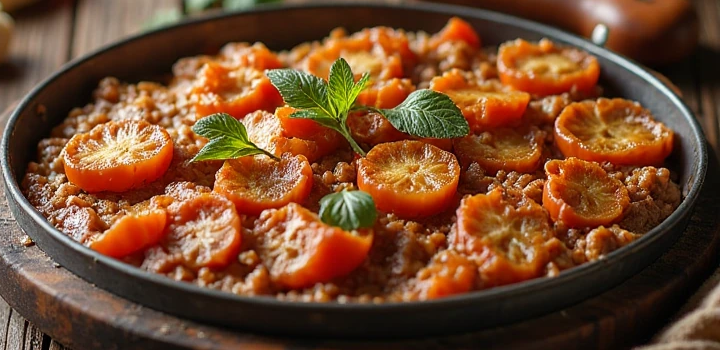
Saving Money on Food
Eating out regularly may seem convenient, but those bills add up fast. Cooking at home gives you more meals for your money. With just a few basic ingredients, you can create multiple dishes, stretch leftovers, and use seasonal produce for extra savings.
As a professional, I know that a well-stocked pantry and smart grocery habits can reduce your food expenses dramatically—without sacrificing taste. You’re investing in ingredients, not service fees, packaging, or tips. That’s money well spent.
Strengthening Family Bonds
There’s something timeless about gathering around the kitchen. Home cooking creates opportunities to connect—with your spouse, kids, friends, or even yourself. Whether it’s prepping vegetables together, setting the table, or sharing stories over dinner, food becomes the thread that ties people together.
As a chef, I’ve seen how powerful a home-cooked meal can be. It’s not just about feeding stomachs—it’s about feeding relationships. In a fast-paced world, cooking and eating together slows things down and builds meaningful connection.
Creative Expression Through Food
Home cooking is an outlet for creativity. It’s where you experiment with flavors, try new techniques, and turn humble ingredients into something personal and exciting. Don’t have a particular spice? Swap it out. Want to mix cuisines? Go for it.
Unlike a restaurant kitchen where recipes must be exact, your home kitchen is your canvas. As a chef, I find freedom in improvising—and I encourage home cooks to do the same. Cooking is both craft and play.
Reducing Food Waste
Home cooking teaches you how to use everything. Vegetable scraps become broth. Leftover chicken becomes soup or tacos. Stale bread turns into croutons or breadcrumbs. This kind of resourcefulness is second nature in a professional kitchen—and it can be just as valuable at home.
When you cook for yourself, you become more aware of what you buy, how much you use, and how to stretch ingredients. Reducing waste isn’t just good for your wallet—it’s good for the planet.
Essential Tools for Home Cooking
A well-equipped kitchen doesn’t need to be full of gadgets—it needs the right tools that perform consistently and last for years. As a professional chef, I believe every home cook should invest in a few quality essentials. These are the tools that make prep easier, cooking faster, and results more reliable.
Must-Have Kitchen Equipment
As a chef, I always say: your tools should work for you, not against you. You don’t need a hundred gadgets to cook well—just a few dependable, multi-purpose pieces of equipment that make cooking smoother and more enjoyable.
Every home kitchen should include:
- A sharp chef’s knife for all-purpose cutting
- A solid cutting board that’s easy to clean
- A cast-iron skillet or heavy stainless steel pan for searing and sautéing
- A deep saucepan and stockpot for soups, grains, and pasta
- Mixing bowls for prep work
- Tongs, wooden spoon, and heatproof spatula for safe handling and stirring
- A measuring set (cups and spoons) for precision
- A digital meat thermometer for perfectly cooked proteins
These items form the backbone of any functional kitchen, whether you’re cooking eggs or preparing a three-course meal.
Basic Pantry Essentials
A well-stocked pantry is like a culinary toolbox—it lets you build flavor and improvise without always running to the store. As a chef, I rely on these staples in both home and professional kitchens:
- Oils: Extra virgin olive oil, neutral cooking oil (like canola or sunflower)
- Vinegars: Balsamic, white wine, and apple cider for dressings and marinades
- Grains and pasta: Rice, quinoa, couscous, and dry pasta
- Canned goods: Tomatoes, beans, tuna, coconut milk
- Flour and sugar: For sauces, baking, and dusting proteins
- Herbs and spices: Salt, pepper, garlic powder, paprika, oregano, cumin, chili flakes, bay leaves
- Stocks and broths: Chicken, beef, or vegetable (store-bought or homemade)
- Sauces: Soy sauce, mustard, Worcestershire, hot sauce
- Dry legumes: Lentils, split peas, chickpeas
With just these essentials, you can whip up everything from a quick soup to a complex sauce.
Small Appliances That Make Life Easier
While not strictly necessary, some small appliances can dramatically streamline your home cooking. As a chef, I use these not for shortcuts, but for efficiency and consistency:
- Blender or immersion blender: Perfect for smoothies, pureed soups, dressings, and sauces
- Food processor: Speeds up chopping, grating, dough mixing, and nut grinding
- Slow cooker or pressure cooker: Ideal for tender meats, stews, and hands-off meals
- Toaster oven or air fryer: Great for small-batch roasting or crisping leftovers
- Electric kettle: For boiling water fast—especially helpful for tea, pasta, or soaking grains
- Stand mixer (optional): A game-changer for frequent bakers
The key is choosing tools that match your cooking habits. If you cook often, these appliances aren’t luxuries—they’re time-savers that help you stay inspired in the kitchen.

How to Start Cooking at Home
Getting started with home cooking can feel overwhelming—but trust me, it doesn’t have to be. As a chef, I always tell beginners: don’t aim for perfection—aim for progress. Cooking at home is a skill anyone can learn with a little planning, patience, and the right mindset.
Setting Up Your Kitchen
A well-equipped kitchen is the foundation of any culinary journey. As a chef, I can tell you that having the right tools and ingredients makes all the difference in creating delicious meals. Here’s how to set up your kitchen like a pro:
Start by organizing your workspace. Cleanliness and order are essential for efficiency and safety. Invest in quality knives—you’ll need at least one chef’s knife, paring knife, and bread knife. A sharp knife not only cuts through food effortlessly but also prevents accidents.
Next, consider your cookware. Choose pots and pans made from durable materials such as stainless steel or cast iron. Non-stick options are great for delicate dishes, while enameled cast iron is perfect for slow-cooked recipes. Don’t forget about baking sheets, cooling racks, and silicone spatulas—they’re indispensable when it comes to desserts and pastries.
Stock your pantry with staples like olive oil, salt, pepper, garlic, onions, flour, sugar, and vinegar. These basics will allow you to whip up anything from soups to sauces without running out mid-recipe. Fresh herbs should always be on hand too; they add depth and freshness to every dish.
Finally, equip yourself with small appliances if needed. Blenders, mixers, and food processors simplify tasks like chopping vegetables or making smoothies. However, don’t overdo it—focus on what truly enhances your cooking experience rather than cluttering your countertops.
Stocking a Beginner-Friendly Pantry
The key to successful home cooking lies within an organized pantry filled with versatile ingredients. Here’s my take on stocking yours:Begin with non-perishables that serve multiple purposes. Olive oil, sea salt, black pepper, and garlic provide flavor in almost every dish. Flour and sugar form the backbone of baked goods, while rice and pasta offer endless possibilities for savory creations. Don’t overlook vinegars — red wine, balsamic, and apple cider varieties bring acidity and complexity to salads, marinades, and sauces alike. Canned tomatoes, beans, and broths ensure quick meal assembly even during busy weeks. Remember, a well-stocked pantry reduces stress and increases creativity in the kitchen.
Planning Simple Meals
Mastering simple meals sets the stage for more advanced techniques later down the line. My advice? Focus on balance first. Every plate should ideally include protein, carbohydrates, fats, and veggies. For example, grilled chicken breast paired with quinoa salad dressed lightly in lemon juice delivers both nutrition and satisfaction. Another favorite beginner-friendly option involves roasted salmon served alongside steamed green beans and mashed potatoes. By planning meals around basic proteins and sides, you’ll develop confidence in preparation methods before diving into complex recipes.
Batch Cooking and Meal Prep Tips
Efficiency matters especially when juggling work, family life, and personal time. That’s where batch cooking shines. Think big-pot soups simmering overnight or large batches of chili divided into single servings for freezing. Roast whole chickens instead of individual breasts, then use leftovers throughout the week in sandwiches, salads, or stir-fry dishes. Bake extra muffins or cookies to snack on between meals. This strategy saves hours spent standing over hot stoves daily. Plus, it guarantees there’s something nutritious waiting whenever hunger strikes!
Cooking for One vs Cooking for a Family
Cooking solo versus feeding a crowd requires different approaches entirely. When dining alone, portion control becomes crucial. Smaller portions prevent waste yet still satisfy cravings fully. Try using miniature skillets or Dutch ovens designed specifically for smaller households. On the flip side, preparing meals en masse calls for larger equipment capable of handling bulk quantities efficiently. Slow cookers excel here since they accommodate generous amounts while requiring minimal attention once started. Whichever scenario applies, remember adaptability ensures success no matter who sits down at your table.
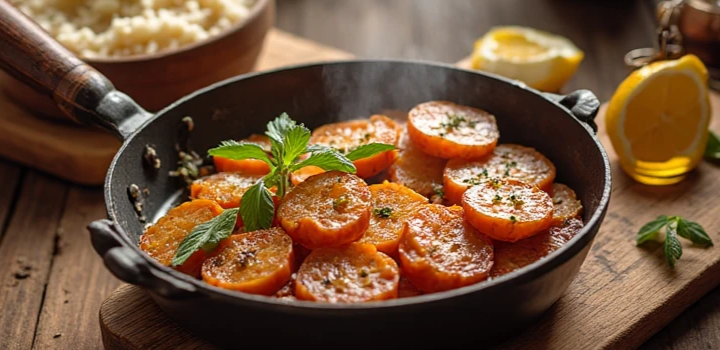
Easy Home Cooking Recipes for Beginners
Starting your culinary journey doesn’t have to feel overwhelming. Whether you’re looking for healthy breakfast ideas, satisfying lunches, or comforting dinners, we’ve got you covered. Below are some easy-to-make recipes tailored just for beginners.
Breakfast Ideas
Classic Scrambled Eggs
Ingredients:
- Large eggs (2–3 per person)
- Butter or olive oil
- Salt & freshly ground black pepper
- Optional: milk, cheese, spinach, mushrooms, etc.
Steps:
- Heat butter/oil in a nonstick pan over medium heat until melted.
- Add beaten eggs and gently scramble them using a wooden spoon or spatula.
- Season with salt, pepper, and other desired additions (cheese, greens).
- Serve immediately with toast or a slice of avocado.
Tip: Adding a splash of milk creates creamier scrambled eggs.
Lunch Recipes
Simple Caprese Salad
Ingredients:
- Ripe tomatoes (cherry or heirloom)
- Fresh mozzarella balls
- Basil leaves
- Extra virgin olive oil
- Balsamic glaze/vinegar
- Sea salt & cracked black pepper
Steps:
- Slice tomatoes and mozzarella evenly.
- Arrange alternating slices of tomato and mozzarella on plates.
- Drizzle generously with olive oil and balsamic glaze.
- Sprinkle torn basil leaves, salt, and pepper.
- Enjoy this light yet refreshing lunch.
Tip: Use room temperature ingredients for maximum flavor.
Quick Weeknight Dinners
One-Pan Chicken and Vegetable Stir-Fry
Ingredients:
- Boneless skinless chicken thighs/breasts
- Assorted bell peppers, carrots, snap peas, snow peas
- Soy sauce/teriyaki sauce
- Garlic cloves, minced
- Sesame seeds (optional garnish)
Steps:
- Cut chicken into bite-sized pieces; season with soy sauce and let sit briefly.
- In a heated wok/skillet, sear chicken until golden brown.
- Remove chicken; quickly sauté chopped vegetables until tender-crisp.
- Return cooked chicken back to pan along with garlic.
- Toss everything together; drizzle additional soy sauce if needed.
- Top with sesame seeds before serving.
Tip: Prepare veggies ahead of time to save minutes during dinner prep.
Healthy Snacks and Smoothies
Green Smoothie Bowl
Ingredients:
- Banana (frozen preferred)
- Spinach/kale
- Almond milk/yogurt
- Chia seeds/fresh fruit (toppings)
Steps:
- Blend banana, leafy greens, almond milk, and yogurt until smooth.
- Pour mixture into bowls; top with chia seeds, berries, granola, or coconut flakes.
- Dig in for a nutrient-dense snack packed with vitamins and antioxidants.
Tip: Freeze bananas beforehand for thicker consistency.
Comfort Food Favorites
Easy Mac ‘n Cheese
Ingredients:
- Elbow macaroni pasta
- Milk
- Butter
- Shredded cheddar cheese
- Pinch of mustard powder/cayenne pepper (optional)
Steps:
- Boil macaroni according to package instructions; drain excess water.
- Melt butter in same pot; whisk in milk gradually.
- Gradually stir in shredded cheese until melted completely.
- Mix cooked pasta into cheese sauce thoroughly.
- Finish off with a pinch of mustard powder or cayenne for added zest.
Tip: Toast breadcrumbs separately for a crunchy topping variation.
Desserts Made Easy
Chocolate Avocado Pudding
Ingredients:
- Ripe avocados
- Cocoa powder
- Honey/maple syrup
- Vanilla extract
- Unsweetened almond milk (or regular milk)
Steps:
- Mash ripe avocados in a bowl until smooth.
- Combine mashed avocado with cocoa powder, sweetener, vanilla, and milk.
- Adjust consistency with more liquid if necessary.
- Refrigerate for an hour or two before enjoying guilt-free chocolate goodness.
Tip: Decorate with nuts, fruits, or edible flowers for presentation.

Tips to Improve Your Home Cooking Skills
To become confident in the kitchen, it’s important to master fundamental skills and techniques. From understanding spices to learning efficient cooking shortcuts, these tips will help transform anyone into a skilled home cook.
Knife Skills & Safety
Proper knife technique is critical for speed, precision, and preventing injuries. Firstly, invest in good-quality knives, particularly a chef’s knife and pairing knife. Keep them sharpened regularly because dull blades cause more slips and require excessive force. Hold the handle firmly but comfortably, grip the blade edge with your index finger and thumb for stability, and guide the cutting motion smoothly. Always cut away from your body, using a steady rocking motion. Learn proper slicing techniques for various foods, such as thinly slicing vegetables or filleting fish. Finally, practice cleaning and storing knives properly after each use to maintain their longevity.
Understanding Herbs and Spices
Herbs and spices elevate flavors in dishes significantly. Understand the unique qualities of common ones, like oregano for Italian cuisine, coriander for Indian curries, and rosemary for roasted meats. Dry spices last longer than fresh herbs, so store them in cool, dark places. Experiment with combinations by trying new pairings—rosemary with lamb, ginger with citrus, or paprika with smoked meat. Pay close attention to how much to add; too little might under-season, whereas too much could overwhelm. Build palate memory by tasting raw versions of each herb/spice individually, noting its aroma and taste profile.
Time-Saving Cooking Techniques
Many professionals rely on certain tricks to minimize kitchen chaos. For instance, pre-chopping ingredients before starting a recipe helps avoid multitasking pressure (“mise en place”). Batch-cook large portions of grains, legumes, or proteins early in the week for easier reheating later. Utilize sous vide or slow cookers for low-effort, high-flavor results. Multitask effectively by boiling pasta simultaneously with braising vegetables or searing meat while finishing sauces. Embrace modern gadgets like instant-read thermometers, immersion blenders, or spiralizers to reduce manual labor. Lastly, embrace frozen produce and prepared stocks when pressed for time.
How to Follow a Recipe
Reading a recipe carefully is essential. Look for clarity regarding ingredient measurements, specific techniques used, and approximate timelines. Check whether there are unusual steps like letting dough rise, preheating ovens, or reducing liquids. Gather all required utensils and ingredients before beginning. Note variations based on available substitutes (like vegan alternatives). Stay flexible—some minor deviations won’t ruin outcomes drastically. Trust visual cues provided by professional photos accompanying many recipes. Most importantly, relax! Overthinking leads to mistakes far worse than calm execution does.
Substitutions and Improvisation
Adapting recipes creatively adds versatility. If missing an ingredient, think critically about potential replacements. Swap heavy cream for Greek yogurt in cream-based sauces. Replace white sugar with honey or maple syrup for sweeter notes. Opt for lower-sodium alternatives if worried about sodium intake. Feel free to omit unnecessary components altogether (such as garnishes), adjust seasoning levels, or substitute obscure spices with similar counterparts found locally. Flexibility builds confidence and ultimately improves problem-solving abilities inside—and outside—the kitchen.
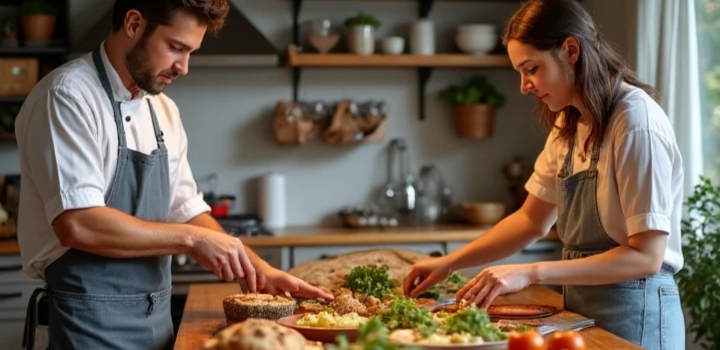
Home Cooking on a Budget
Cheap Ingredients That Go a Long Way
When you’re cooking on a budget, it’s essential to choose ingredients that offer maximum value for your money. Here are some of my favorite affordable staples that can stretch far in the kitchen:
- Rice and Grains: Rice is versatile and filling. Pair it with beans or lentils for added protein.
- Legumes: Beans, chickpeas, and lentils are not only cheap but also packed with nutrients.
- Seasonal Vegetables: Buying seasonal produce ensures both affordability and freshness.
- Eggs: A great source of protein that’s easy on the wallet.
- Oats: Perfect for breakfast porridge or baking projects like muffins and granola bars.
Weekly Meal Planning on a Tight Budget
Planning meals ahead helps avoid last-minute takeout temptations. Here’s how I approach meal planning when sticking to a tight budget:
Steps to Effective Meal Planning:
- Inventory Check: Take stock of what you already have at home before shopping.
- Create a List: Write down recipes based on available ingredients and planned grocery purchases.
- Batch Cooking: Prepare larger quantities of food to freeze portions for later use.
- Leverage Sales: Keep an eye out for sales and discounts at local markets.
Smart Grocery Shopping Tips
Savvy shopping habits make all the difference when trying to save money without compromising quality:
- Buy in Bulk: Non-perishable items often come cheaper when purchased in bulk.
- Compare Prices: Don’t be afraid to compare prices across different stores or online platforms.
- Use Coupons Wisely: Clip coupons strategically—only if they align with things you’ll actually buy.
- Shop Seasonally: Produce costs less during its peak season.
Using Leftovers Creatively
Transform leftovers into delicious new dishes instead of letting them go to waste! Some creative ideas include:
- Soup Stocks: Use vegetable scraps to create homemade broths.
- Salads: Add cooked grains and proteins from previous meals for hearty salads.
- Frittatas: Mix together various veggies and meats in an egg-based dish.
- Casseroles: Combine leftover pasta, rice, or potatoes with cheese and sauces for comforting casseroles.
By incorporating these strategies, even those working within strict budgets can enjoy nutritious, satisfying meals while saving money

Healthy Home Cooking Tips
Low-Fat Cooking Methods
Embrace healthier ways of preparing meals by adopting low-fat techniques such as grilling, steaming, roasting, poaching, and stir-frying. These methods retain flavor while minimizing fat intake. Choose lean cuts of meat, skinless poultry, and plant-based alternatives whenever possible. Olive oil, avocado oil, or coconut oil can replace butter for healthy fats.
Reducing Salt and Sugar
Cutting back on salt and sugar is crucial for maintaining good health. Experiment with herbs, spices, citrus juices, vinegars, and other natural flavors to enhance taste. Opt for unsalted nuts, whole-grain bread, plain yogurt, and fruit instead of processed snacks high in sodium and sugar content.
Whole Food Ingredients to Focus On
Prioritize nutrient-dense foods like leafy greens, colorful vegetables, legumes, whole grains, fish rich in omega-3 fatty acids, nuts, seeds, and minimally processed dairy products. Avoid refined carbohydrates, sugary drinks, trans fats, and excessive alcohol consumption.
Portion Control at Home
Controlling portion sizes plays a significant role in achieving balanced nutrition. Serve smaller plates, eat mindfully, listen to hunger cues, drink plenty of water throughout the day, and limit second helpings unless truly necessary. Eating slowly allows time for satiety signals to register properly.
Popular Styles of Home Cooking Around the World
From simple comfort foods to complex traditional recipes, home cooking styles vary widely across different cultures and regions around the globe. Each region has its unique culinary heritage that reflects local ingredients, historical influences, and family traditions passed down through generations. Here’s an extensive exploration into some popular home-cooked meals from various parts of the world.
Italian Home Cooking
Italian cuisine is renowned for its simplicity, freshness, and emphasis on high-quality ingredients. At the heart of Italian home cooking lies a deep respect for tradition and regional diversity. Below are some iconic dishes enjoyed in households throughout Italy:
Authentic Italian Pasta Dishes
- Spaghetti alla Carbonara: A classic Roman dish made with eggs, cheese, guanciale or pancetta, and black pepper.
- Risotto Milanese: Originating from Milan, this creamy rice dish gets its distinctive yellow color from saffron.
- Lasagna Bolognese: Layered pasta sheets filled with meat sauce, béchamel, and grated cheese.
Regional Specialties
Each region boasts distinct specialities based on their geography and history:
- Tuscan Ribollita: Hearty vegetable soup thickened with bread, reflecting Tuscany’s peasant roots.
- Neapolitan Pizza Margherita: Simple yet delicious pizza topped with tomato sauce, mozzarella, basil, and olive oil.
- Sicilian Arancini: Fried rice balls stuffed with ragù, peas, and sometimes ham or cheese.

Asian Family Meals
Asian cuisines span vast geographical areas and cultural differences but share common themes such as balance between flavors, use of aromatic spices, and importance placed on communal dining experiences.
Chinese Homestyle Cuisine
China offers diverse regional variations within its broad culinary landscape:
- Kung Pao Chicken: Stir-fried chicken chunks coated in chili peppers and peanuts.
- Mapo Tofu: Soft tofu simmered in a spicy bean-based sauce with minced pork.
- Steamed Fish with Soy Sauce: Lightly seasoned fish steamed until tender and served with soy sauce and scallions.
Japanese Home-Cooked Classics
Japan prioritizes minimalist preparation techniques emphasizing natural tastes:
- Oden: Simmered stew consisting of various ingredients like daikon radish, konjac noodles, and hard-boiled eggs cooked together in dashi broth.
- Chawanmushi: Savory egg custard steamed with seafood, vegetables, and shiitake mushrooms.
- Tempura Vegetables: Crispy batter-coated seasonal vegetables fried quickly in hot oil.
American Comfort Food
American comfort food embodies nostalgia, warmth, and familiarity, often associated with childhood memories or celebrations. These dishes typically feature bold flavors and generous portions.
Classic Southern Favorites
The South contributes significantly to America’s culinary identity:
- Fried Chicken: Buttermilk-battered chicken pieces crisped up by frying.
- Macaroni & Cheese: Creamy baked macaroni covered in gooey cheddar cheese sauce.
- Biscuits & Gravy: Fluffy homemade biscuits smothered in rich sausage gravy.
Midwestern Potluck Staples
Potlucks showcase shared contributions among neighbors and friends:
- Green Bean Casserole: Mixed green beans layered with cream of mushroom soup and crunchy onion rings.
- Deviled Eggs: Hard-boiled eggs halved and filled with yolk mixed with mayonnaise, mustard, paprika, etc.
- BBQ Pulled Pork Sandwiches: Slow-cooked pulled pork slathered in tangy barbecue sauce sandwiched between soft buns.
Latin American Home Recipes
Latin America encompasses vibrant and flavorful gastronomic traditions influenced heavily by indigenous, European, African, and even Asian immigrants’ heritages.
Mexican Household Delights
Mexico showcases intense combinations of spice, heat, acidity, and sweetness:
- Enchiladas Verdes: Corn tortillas rolled around filling then dipped in tomatillo salsa before baking.
- Carne Asada: Grilled marinated beef strips seasoned simply with salt, lime juice, cumin, garlic powder, and oregano.
- Tamales: Steamed corn dough wrapped in banana leaves or husks containing fillings ranging from savory meats to sweet fruits.
Brazilian Family Feasts
Brazil blends Portuguese colonization with native Brazilian flair:
- Feijoada: Traditional black bean stew combined with several types of salted and smoked meats.
- Moqueca de Peixe: Seafood stew cooked slowly over low heat using coconut milk, palm oil, onions, tomatoes, coriander, and garlic.
- Brigadeiros: Chocolate truffles made primarily from condensed milk, butter, cocoa powder, and chocolate sprinkles.
Mediterranean Cooking Traditions
Health-conscious diets centered around whole grains, legumes, fruits, nuts, seeds, olive oils, herbs, and moderate amounts of animal products define Mediterranean-style eating habits.
Greek Home Cookery
Greece brings fresh produce, robust flavors, and healthy fats front-and-center:
- Spanakopita: Spinach-filled phyllo pastry pockets brushed generously with butter.
- Souvlaki: Skewered marinated lamb or pork grilled over charcoal fire.
- Dolmades: Grape leaves stuffed either vegetarian style (rice, pine nuts, raisins) or carnivore-friendly version including ground meat.
Spanish Tapas Culture
Tapas reflect Spain’s love affair with small plates designed for sharing at gatherings:
- Patatas Bravas: Cubes of potatoes roasted first then flash-fried doused liberally in garlicky alioli or spicy brava sauce.
- Jamón Ibérico: Thin slices of air-dried cured ham derived exclusively from Iberian pigs raised freely outdoors grazing acorns.
- Paella Valenciana: Signature Spanish rice dish featuring rabbit, snails, duck, and/or seafood complemented by saffron-infused stock.
This comprehensive guide highlights just how varied global home cooking can be! Whether you’re craving something light and refreshing or indulging in decadent treats, there’s always room for new discoveries waiting beyond your kitchen doorstep.
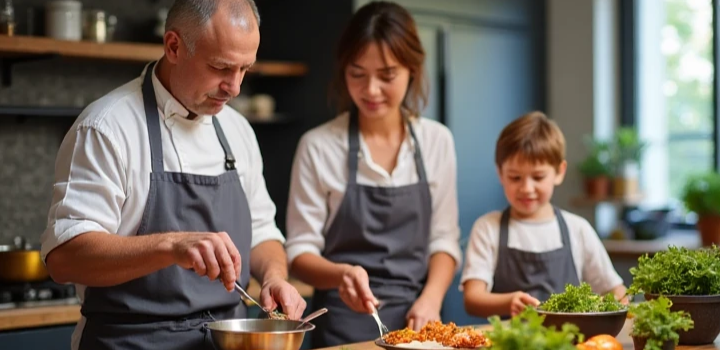
Home Cooking for Special Diets
Preparing meals at home tailored to specific dietary requirements demands both creativity and careful planning. Whether it’s accommodating vegetarian or vegan diets, dealing with gluten sensitivities, following low-carb regimes, or addressing kids’ picky appetites, it’s important to approach cooking with precision and variety. Here’s a detailed look at crafting wholesome meals for each type of specialized diet.
Vegetarian and Vegan
A vegetarian diet excludes meat, poultry, fish, and any other animal-derived ingredients. Vegans take it one step further by excluding not only animal products but also items involving animal exploitation, such as dairy, eggs, honey, and refined sugar filtered through bones.
Nutritional Considerations for Planned Plant-Based Meals
- Plant Proteins: Incorporate complete proteins from legumes (lentils, chickpeas, black beans), quinoa, tofu, tempeh, seitan, edamame, and protein-packed nuts and seeds.
- Iron Fortification: Combine iron-rich foods (spinach, kale, dried apricots, pumpkin seeds) with vitamin C sources (oranges, lemons, kiwi) to enhance absorption.
- Omega-3 Fatty Acids: Include flaxseed, chia seeds, walnuts, hemp seeds, and omega-3 enriched plant-based oils.
- Calcium: Focus on calcium-fortified nut-milks, dark leafy greens, figs, sesame seeds, tahini, and calcium-set tofu.
- B12 Supplements: Since plant foods don’t naturally contain B12, consider incorporating fortified breakfast cereals, nutritional yeast, or B12 capsules into your diet plan.
Recipe Ideas
- Hearty Breakfast Bowl:Scrambled tofu with spinach, mushrooms, and sriracha stirred in.
- Lunch Salad: Roasted beets, carrots, chickpeas, avocado, and quinoa tossed in a citrus vinaigrette.
- Weeknight Dinner: Red lentil dal paired with naan bread or brown rice.
Gluten-Free Options
Those with gluten sensitivity or diagnosed celiac disease must eliminate gluten entirely. Wheat, barley, rye, and related hybrids are strictly avoided. Oats require additional caution as they might be contaminated during production.
Alternative Flours and Starches
- Almond Flour: Great for dense baked goods like cookies and muffins.
- Coconut Flour: Adds moisture and slight sweetness to desserts.
- Cassava/Tapioca Flour:Perfect for making thicker sauces and gummy textures.
- Brown Rice Flour: Suitable for breading fish or creating flatbreads.
- Teff Flour: Rich in minerals and vitamins, perfect for Ethiopian injera-like breads.
Meal Inspiration
- Quiche Lorraine Reimagined: Using a gluten-free crust filled with eggs, cheese, bacon bits, and spring onions.
- Pad Thai Substitute: Stir-fry shirataki noodles (made from glucomannan) with tamari, peanut butter, lime juice, and cilantro.
- Savory Crepes: Blend coconut flour, eggs, and milk for delicate crepes filled with goat cheese and sautéed spinach.
Keto and Low-Carb Meals
For followers of ketogenic or low-carbohydrate diets, limiting total carbohydrate intake is key. The body shifts into ketosis, burning stored fat for energy rather than relying on sugars. Understanding what constitutes acceptable foods helps create effective meal plans.
Staple Items for Low-Carb/Ketogenic Preparation
- Proteins: Grass-fed beef, wild-caught fish, pasture-raised poultry, eggs, full-fat dairy, fermented tofu.
- Healthy Fats: Olive oil, coconut oil, avocado oil, butter, ghee, MCT oil, and macadamia nuts.
- Non-starchy Vegetables: Leafy greens, cruciferous veggies (broccoli, cauliflower), asparagus, bell peppers, mushrooms, and zucchini.
- Low-sugar Berries:Raspberries, blueberries, and blackberries in moderation.
Delicious Recipe Ideas
- Fathead Pizza Crust: Mix almond flour, cheese, and eggs to form a versatile base for toppings.
- Broccolini Caesar Salad: Top steamed broccolini spears with anchovies, parmesan, and a tangy dressing.
- Garlic Herb Meatballs: Form lean ground beef into bite-sized balls seasoned with rosemary, sage, and garlic, then slow-roast.
Cooking for Kids or Picky Eaters
Encouraging young palates to embrace healthier choices involves patience, persistence, and creative presentation. Start with fun shapes, bright colors, and appealing textures to entice even the most selective eater.
Strategies for Engaging Children
- Get Them Involved: Allow kids to participate in shopping, measuring, mixing, and decorating.
- Make It Fun: Create miniature versions of favorite dishes like tiny burger sliders or finger-shaped chicken nuggets.
- Offer Variety: Serve multiple sides at once, letting kids choose which ones appeal most.
- Be Patient: Don’t pressure reluctant eaters; keep offering new foods consistently.
Family-Friendly Recipes
- Rainbow Quesadilla: Fill tortillas with colorful vegetables, grated cheese, and mild salsa, then toast in a skillet.
- Banana Nut Smoothie: Blend frozen bananas, almond butter, chia seeds, and milk into a frothy drink.
- Mini Turkey Meatloaves: Shape lean ground turkey into cute little loaves seasoned with ketchup, mustard, and Worcestershire sauce.
By thoughtfully preparing meals aligned with individual dietary restrictions, families can enjoy nourishing, delicious fare regardless of their particular needs.

Creating the Perfect Home Kitchen Atmosphere
Setting the right mood in your kitchen goes beyond just having functional appliances and quality cookware. It’s about creating an environment that inspires culinary creativity, fosters connection with loved ones, and makes time spent cooking enjoyable rather than tedious. Here are some key aspects to consider when designing your ideal home kitchen atmosphere:
Lighting and Décor
Lighting plays a crucial role in creating the right atmosphere on your kitchen—whether it’s an intimate family meal or a festive gathering. Proper lighting can enhance the interior of your kitchen, making it comfortable and functional. Let’s explore key aspects of lighting and décor that will help you create the perfect ambiance for cooking and entertaining guests.
Types of Lighting
General Lighting
General lighting provides even distribution of light throughout the entire space. Ceiling fixtures, chandeliers, or recessed spotlights are commonly used here. It’s important to choose warm-colored bulbs (around 2700–3000K) to ensure comfort and avoid harsh shadows.
Task Lighting
Task lighting is essential over work areas like countertops or stoves. Use LED downlights or pendant lamps with adjustable angles to provide clear illumination without straining eyes during food preparation.
Accent Lighting
Accent lighting highlights decorative elements such as artwork, shelves, or wine cabinets. Install under-cabinet lights or internal cabinet lighting to draw attention to beautiful items within your kitchen design.
Decor Elements
Your kitchen should reflect your personality while exuding warmth and coziness. Here are some ideas for enhancing its aesthetic appeal:
- Plants: Living plants add freshness and natural charm. Choose low-maintenance varieties like Chlorophytum comosum (spider plant) or Ficus benjamina.
- Pictures & Photos: Display photos of loved ones, original landscapes, or favorite recipes framed stylishly around the room.
- Backsplash & Accessories: If you’re using backsplash tiles, opt for easy-to-clean materials. Complement this look with attractive dishes, decorative plates, and vases.
- Tableware & Serving Sets: Stylish cutlery and unique table settings elevate dining experiences. Select designs that harmonize well with your overall kitchen style.
By combining different types of lighting and thoughtful decoration choices, you’ll transform your kitchen into a beloved hub where everyone loves spending time together.

Music and Mood
Music profoundly influences our moods and perceptions. When we’re in the kitchen, music helps us relax, inspires culinary creativity, and fosters connections between friends and family members. Here’s how to curate the ideal soundtrack for any occasion at home.
Choosing Appropriate Music
Selecting suitable tunes depends largely on context and desired ambience. Consider these tips when choosing musical tracks for various scenarios:
- Morning Routine: Start each day positively by playing upbeat jazz pieces, pop songs, or classical compositions.
- Cooking Dinner: Opt for relaxing instrumental background sounds or acoustic melodies that encourage focus on cooking tasks.
- Party Atmosphere: For gatherings, pick energetic dance beats if socializing among friends; otherwise, select gentle ballads or film scores for quiet moments shared with close relatives.
Creating Playlists
A personalized playlist makes finding just-right tunes quick and effortless. Follow simple steps below to build effective playlists:
- Create themed lists based on mood or specific occasions.
- Add favorite tracks after previewing their compatibility with existing selections.
- Regularly update playlists with new discoveries from streaming services or recommendations.
The right mix of music enriches daily life, lifting spirits and adding special touches to every household setting.
Cooking with Family and Friends
Preparing meals alongside loved ones strengthens bonds, shares knowledge across generations, and creates lasting memories. Whether it’s bonding through learning new techniques or simply enjoying quality time spent side-by-side, there’s no better way to nurture relationships than through communal cooking efforts. Below are insights into why group cooking works so effectively along with practical advice for organizing successful sessions.
Benefits of Group Cooking
Collaborating in the kitchen offers numerous advantages including:
- Strengthening familial ties and friendships.
- Exchanging valuable skills and culinary traditions.
- Developing teamwork abilities and creative thinking.
- Encouraging children’s interest in healthy eating habits.
In addition, sharing responsibilities reduces stress levels associated with solo cooking duties, allowing participants to fully enjoy themselves.
Tips for Organized Sessions
To make sure collaborative cooking goes smoothly, follow these guidelines:
- Plan menus ahead and assign roles accordingly.
- Prepare all necessary ingredients and tools beforehand.
- Keep conversations positive and engaging by sharing stories and laughter.
- Don’t shy away from experimentation! Try unfamiliar recipes and methods occasionally.
Each joint cooking session becomes a memorable event worth cherishing forever!
Turning Cooking Into a Daily Ritual
Daily meal preparations become integral parts of our routines. By transforming this process into something enjoyable, we enrich our lives with small pleasures. This approach enables us to savor every moment, appreciate life’s little joys, and embrace mindfulness practices. Let me guide you step-by-step towards turning everyday cooking into an uplifting ritual.
Planning and Preparation
Before starting, plan your schedule wisely and prepare required components. Determine weekly menus, compile shopping lists, then purchase high-quality produce and equipment needed. Such organization saves both time and energy, ensuring smoother execution later.
Using Quality Ingredients
Choosing fresh and organic products significantly impacts final dish flavors. Buy seasonal vegetables, fruits, lean proteins, and seafood regularly. These ingredients serve not only taste buds but also nourish bodies daily.
Experimenting With Recipes
Trying out novel recipes keeps things interesting. Find inspiration online, cookbooks, magazines, etc., then attempt those recipes yourself. Discover diverse tastes and aromas waiting to be explored!
Enjoy Every Moment
Slow down, relish being present in the kitchen. Smell spices wafting through air, hear water boiling, feel heat radiating from ovens. Allow cooking itself to evolve into a meaningful routine filled with delightful sensations.
Embrace love and enthusiasm wholeheartedly as you turn ordinary days into celebrations centered around flavorful creations!
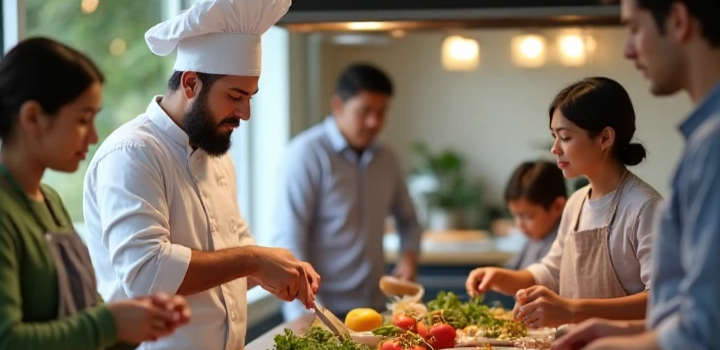
Home Cooking as a Lifestyle
Home cooking isn’t merely about preparing meals—it represents a lifestyle choice rooted in health-conscious decisions, cultural heritage, and personal satisfaction. As a true chef, I firmly believe that embracing homemade cuisine brings countless benefits beyond nutrition alone. It connects families, teaches invaluable lessons, promotes sustainability, and encourages creativity.
Health Benefits of Homemade Meals
One significant advantage of cooking at home lies in controlling what goes into your plate. You have complete authority over ingredient selection, portion sizes, and cooking methods. This freedom allows you to tailor meals according to dietary preferences, allergies, or specific nutritional goals. Moreover, avoiding processed foods leads to lower consumption of harmful preservatives, artificial colors, and unhealthy fats often found in ready-made options.
Here are three key ways home cooking enhances wellness:
- Customization: Tailoring meals ensures they meet individual needs, whether following a gluten-free diet, managing diabetes, or seeking weight loss solutions.
- Nutrient Density: Fresh ingredients packed with vitamins, minerals, antioxidants, and fiber contribute directly to improved immune function, cardiovascular health, brain development, muscle repair, bone density, and more.
- Cost Savings: Making meals from scratch typically costs less compared to buying prepackaged alternatives, especially considering long-term financial implications linked to chronic diseases related to poor diets.
Cultural Heritage Through Food
Every culture has its own distinct culinary identity shaped by geography, climate, history, religion, and tradition. Exploring traditional recipes passed down through generations introduces youngsters to their roots while deepening appreciation for diversity worldwide. Additionally, trying international cuisines broadens horizons, educates palates, and cultivates respect toward other cultures’ customs.
For instance, Italian pasta-making classes teach kids basic dough kneading techniques alongside stories behind famous sauces like Bolognese sauce or pesto genovese. Similarly, Japanese tempura frying workshops reveal secrets surrounding batter consistency, oil temperature control, and proper dipping sauces. Each experience builds character traits such as patience, discipline, curiosity, and pride in one’s ancestry.
Sustainable Practices Begin in Your Kitchen
Sustainability starts locally before scaling globally. Reducing waste begins with smart grocery shopping strategies focused on purchasing exactly what’s needed rather than excessively stockpiling perishables prone to spoiling quickly. Reusing leftovers creatively prevents unnecessary disposal too. Furthermore, growing herbs indoors minimizes reliance upon store-bought packets wrapped in plastic packaging. Lastly, composting vegetable scraps diverts biodegradable matter back into soil instead of landfills.
Other eco-friendly measures include:
- Buying local, seasonal produce supports regional farmers and cuts carbon emissions caused by transportation networks spanning thousands of miles.
- Investing in reusable containers eliminates single-use plastics contributing to environmental pollution issues plaguing oceans today.
- Energy-efficient appliances reduce electricity bills substantially since conventional ovens consume far greater power relative to modern convection models.
Emotional Rewards Await Those Who Love to Cook
Beyond physical gains, emotional rewards await anyone passionate enough to commit themselves fully to mastering culinary arts. Seeing smiles light up faces gathered around tables enjoying tasty treats instills immense pride knowing you’ve contributed meaningfully to someone else’s happiness. Plus, nothing compares to receiving praise from others who genuinely appreciate hard work invested into crafting delicious feasts worthy of celebration.
Furthermore, there exists therapeutic value inherent in chopping vegetables rhythmically, stirring pots gently, tasting samples frequently, smelling aromas wafting through kitchens…all contributing factors leading ultimately toward mental clarity, reduced stress levels, enhanced cognitive functioning, boosted confidence, sharpened memory recall, strengthened problem-solving capabilities, increased resilience against adversity, and deeper connections formed between individuals united by common interests revolving around food preparation activities.
Ultimately, adopting home cooking as part of one’s lifestyle signifies dedication towards holistic living encompassing body, mind, spirit, community engagement, planetary preservation initiatives, and self-discovery journeys exploring endless possibilities awaiting discovery via exploration of global gastronomic delights yet undiscovered until now.
Frequently Asked Questions on Home Cooking
What are the essential kitchen tools for home cooking?
Every chef needs a good set of knives, cutting boards, pots and pans, mixing bowls, measuring cups and spoons, tongs, spatulas, whisks, and an oven thermometer. These basic tools will cover most culinary tasks.
How do I properly season my food?
Season your dishes with salt, pepper, herbs, and spices in small increments while tasting along the way. Avoid over-seasoning by adding flavors gradually until you achieve balance.
What’s the best way to store leftovers safely?
Store cooked foods promptly in airtight containers within two hours after preparation. Keep them refrigerated below 4°C or frozen if longer storage is needed.
Why does my meat come out dry when roasting it?
Meat dries out due to excessive heat or prolonged cooking time. Use low temperatures, baste frequently, rest before slicing, and consider brining or marinating beforehand.
How can I make perfect scrambled eggs every time?
Whisk eggs gently but thoroughly, cook slowly over medium-low heat, stir continuously, remove from heat just before they’re fully set, and let residual heat finish cooking.
What’s the secret behind making crispy fried chicken?
Dip chicken pieces first into flour then egg wash followed by breadcrumbs or cornflakes mixture. Deep fry in hot oil (around 180°C), ensuring each piece gets golden brown without burning.
Can I substitute ingredients in recipes easily?
Yes, substitutions often work well depending on taste preferences. However, some key components like leavening agents may affect texture significantly so proceed cautiously.
Is there any trick to prevent pasta from sticking together during boiling?
Add plenty of water, bring it to a rolling boil, add salt generously, stir occasionally, and avoid covering the pot completely once boiling starts.
Do I really need different types of knives in my kitchen?
Absolutely! Different blades serve specific purposes—chef’s knife for chopping vegetables, paring knife for precision cuts, serrated blade for breads, etc., enhancing efficiency and safety.
How long should I simmer sauces to thicken them naturally?
Allow liquids to reduce through gentle simmering until desired consistency is reached. Stir regularly preventing scorching especially towards end stages where sugar content increases.
Are cast iron skillets worth investing in?
Definitely yes! Cast irons distribute heat evenly providing excellent browning results. They last forever requiring minimal maintenance aside regular cleaning and occasional reseasoning.
Should I preheat my oven before baking cakes/breads/pizzas?
Always preheat ovens according to recipe instructions as sudden temperature changes disrupt even rising patterns leading to unevenly baked goods.
When using fresh herbs vs dried ones, what adjustments must be made?
Fresh herbs tend to have stronger aromas thus require less quantity compared to their dehydrated counterparts which lose intensity upon drying hence needing more volume per measure used.
What causes soups/stews to separate into layers after cooling down?
Separation occurs because fats rise above aqueous solutions forming distinct strata. To avoid this issue blend soup thoroughly post-cooking ensuring homogeneity throughout.
Where do I start learning new techniques beyond basics?
Begin exploring advanced methods such as sous vide cooking, smoking meats, fermentation processes, molecular gastronomy experiments, watching online tutorials, reading books authored by renowned chefs, attending workshops, and experimenting freely under controlled conditions.
